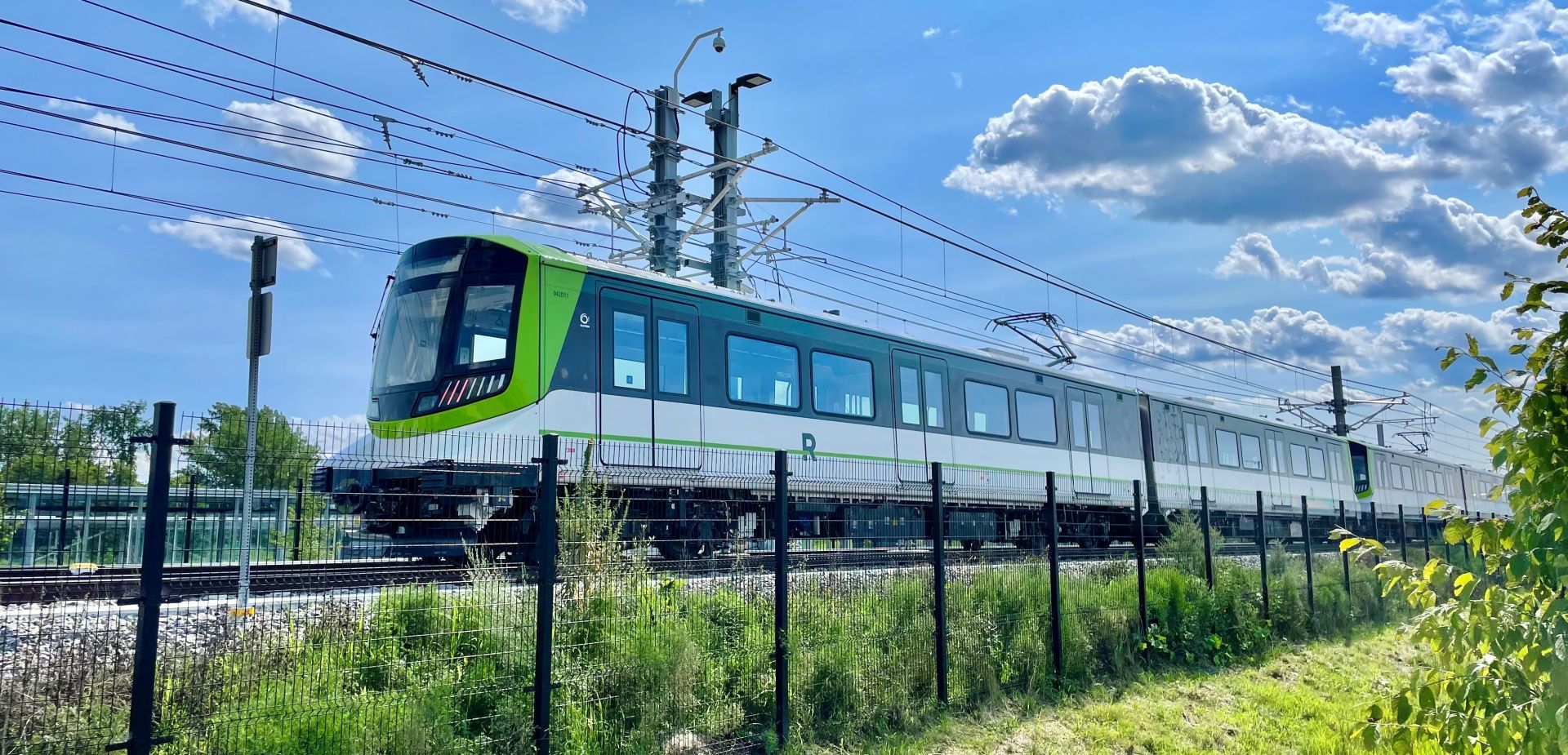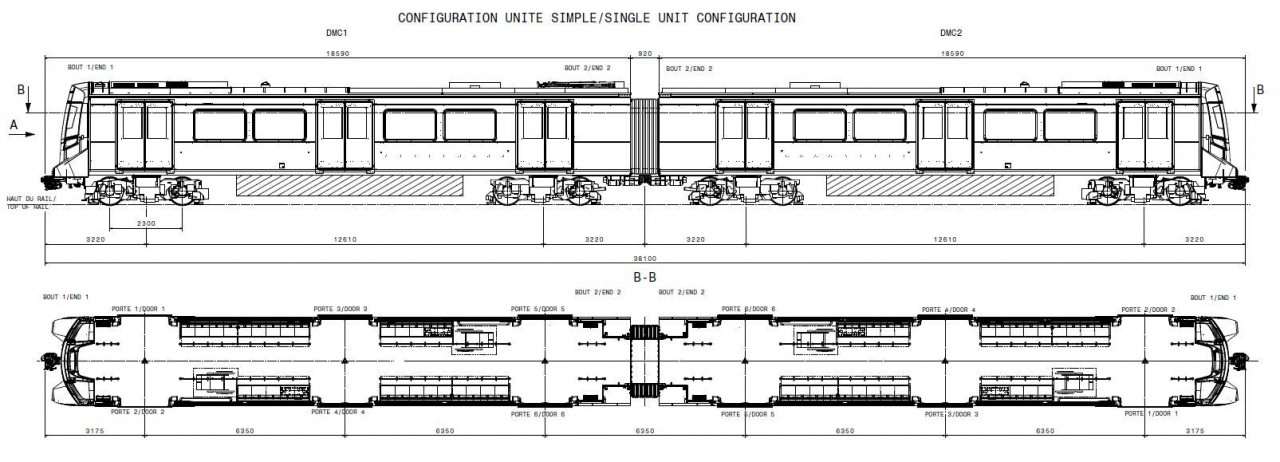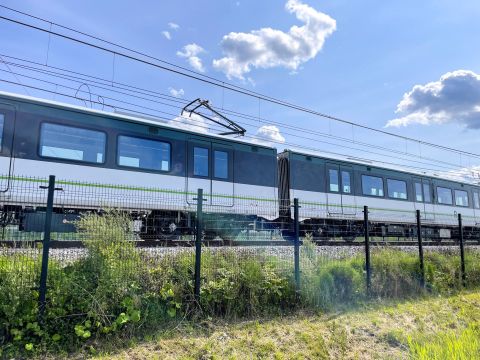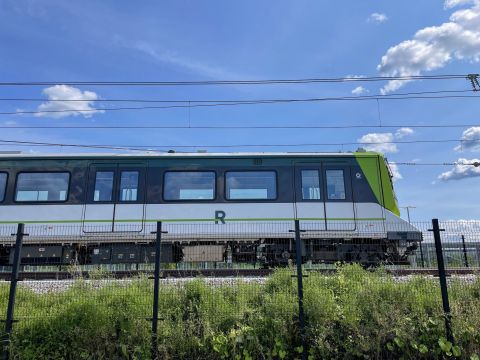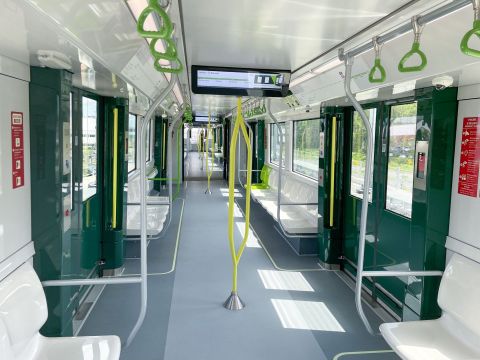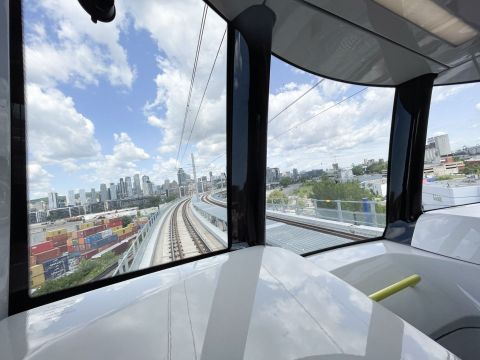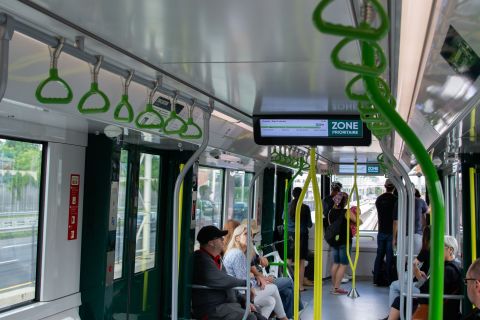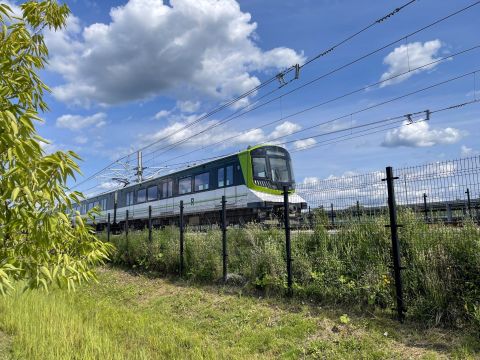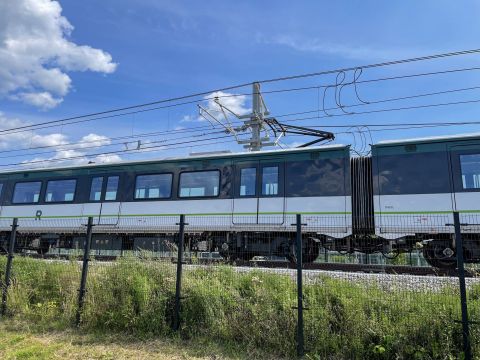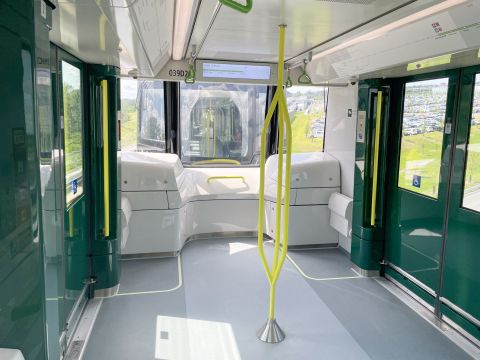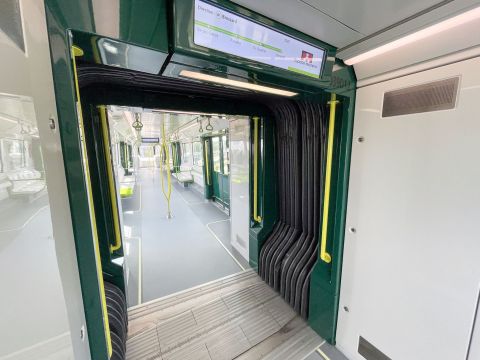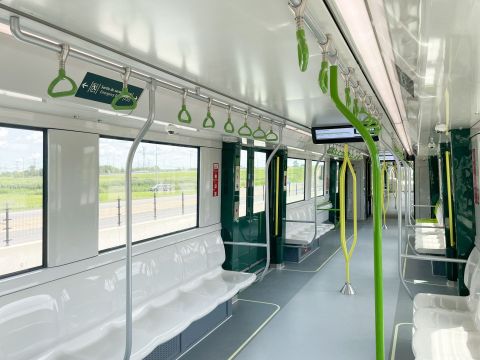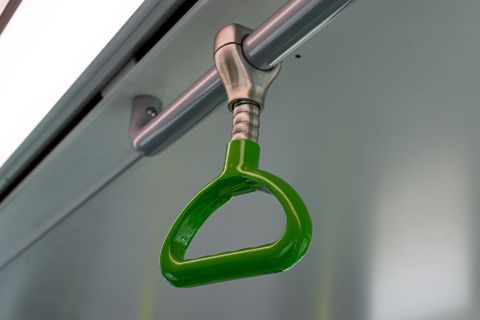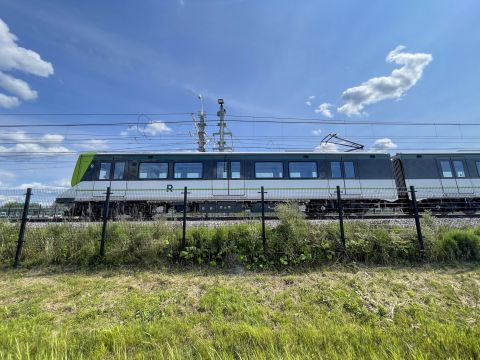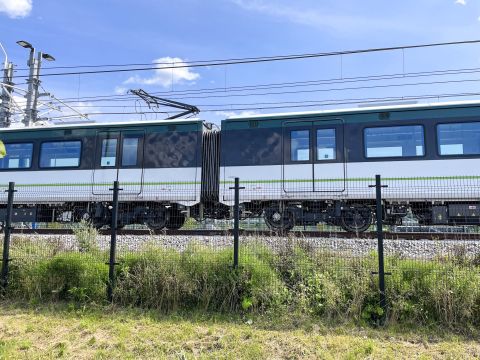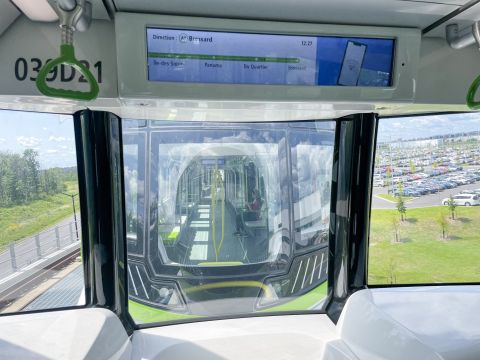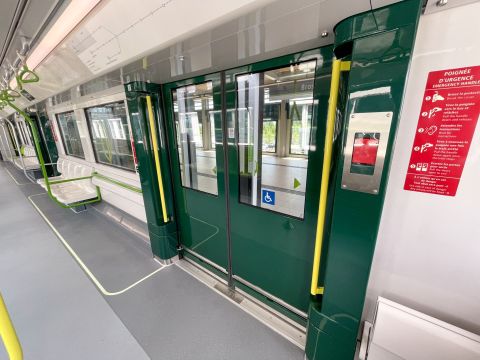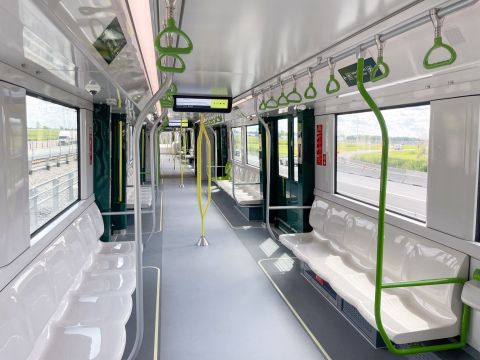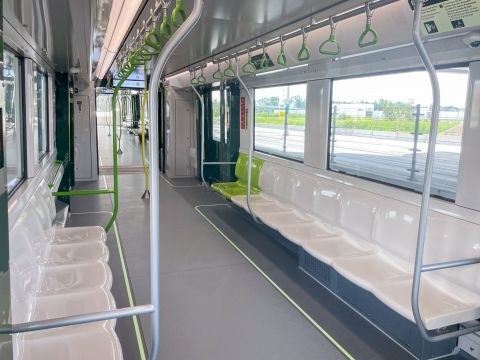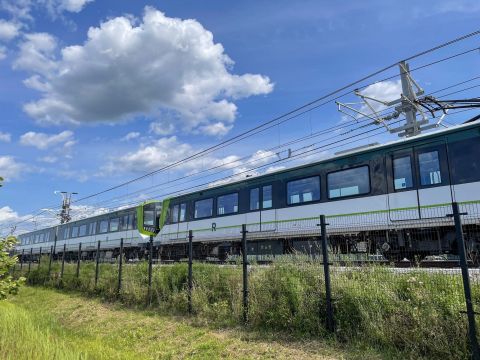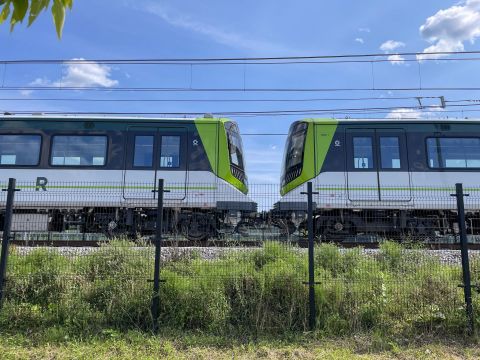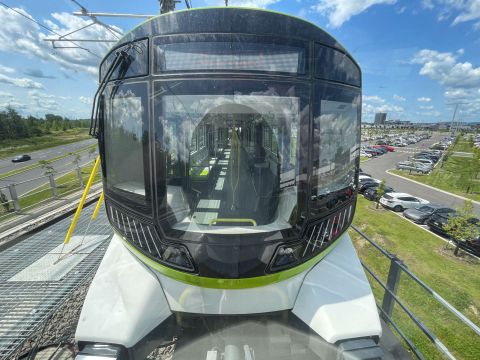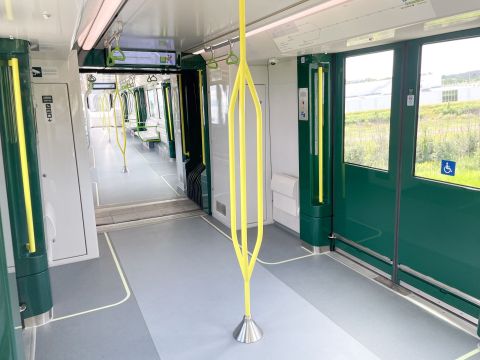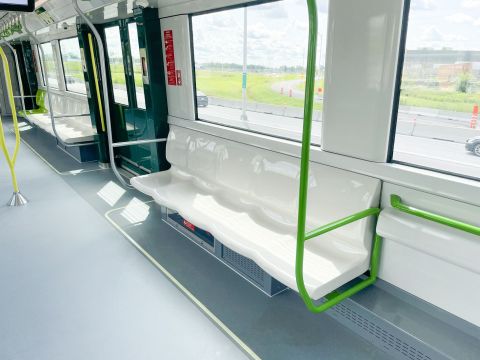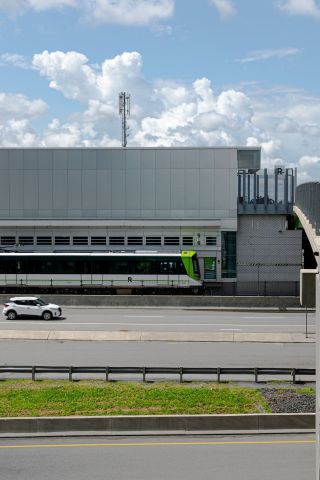Ordered by CDPQ Infra in 2018, the Alstom Metropolis was retained to serve as the rolling stock for the REM. In total, 212 cars were ordered, operating in four-car during peak and two-car units during off-peak hours. The trains were assembled in India and started to be delivered in October 2020. While used for the REM, the Metropolis can also be found around the world and is the basis for the rolling stock in many transit networks including Paris, Singapore, Sydney, Dubai, and Buenos Aires. The platform is highly customizable and designed to meet the operational needs of operators throughout the world.
The Alstom Metropolis is a light rail, high-floor trainset that is 100% electrified and benefits from regenerative breaking, full-LED lighting and modern HVAC equipment. Each pair of cars is semi-permanently coupled, with four-car units consisting of two pairs attached with an exterior coupling mechanism. The consists are powered by an overhead catenary that provides 1,500V DC, with one motor on each axle. Peak speeds of 100 km/h are expected on some segments, with an average speed of 51 km/h. While the trains are larger than the MPM-10 Azur rolling stock, they use standard gauge trackage. Once closed, the wide doors will be flush with the side of the train to reduce drag and improve aesthetics.
The trains are fully automated and rely on an Alstom-designed Automatic Train Control (Urbalis 400 CBTC): as such, there will not be a cab in the vehicles, leaving the ends of each car fully accessible to passengers. Should Automatic Control be disabled, or manual movement of the train be required, a "hidden" control panel can be found under the covers at the end of each car and is locked out to avoid accidental intervention.
Due to their high-floor nature, the trains have an emphasized focus on accessibility with level-boarding at all stations, level-floor throughout and wide-open areas to facilitate movement in the train. Reserved spaces are found throughout to accommodate passengers with mobility needs. Before production started, a life-size model of the rolling stock was presented to customers in Montreal and feedback was used to improve the passenger experience. The choice of colours and contrast between the elements was done to improve accessibility to users with visual difficulties.
To enhance the passenger experience, the Metropolis was considerably customized for the REM. The visual identity of the trains, including the cab-end and accent colours, emphasizes the various elements of Montreal. The three designs, Saint-Laurent, Mont-Royal and L'Expo were presented to the public who then offered their feedback in 2018. 42% voted in favour of the St-Laurent Design, which was used to finalize the identity of the rolling stock. On the interior, maps of the various branches, a screen indicating the next stop and destination, Wi-Fi, heated floors and capacity indicators (using sensors integrated into the hydraulic suspension of the cars) allow for a seamless passenger experience. Of the projected 600 passengers in a 4-car train, 128 will be seated. The seats feature an increased side-bolster to counteract the sideways alignment of passengers compared to the train movement.
